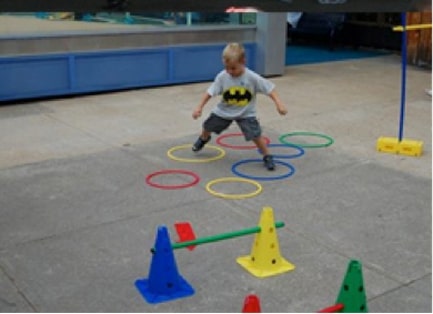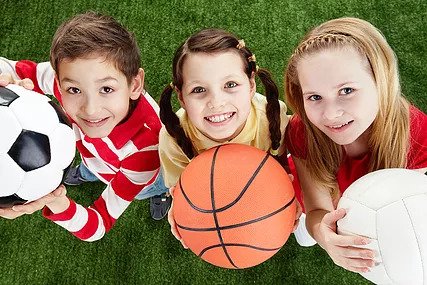Physical activity in children is vital for development and helps children understand important foundations for a healthy and active lifestyle.
Some of the benefits of physical activity in children include;
- Building strong bones and muscles
- Promoting healthy growth, development and weight
- Improving balance, coordination, strength, flexibility and overall fitness levels
- Improving posture
- Establishing strong connections between the limbs and brain
- Improving confidence and promoting stress relief and relaxation
- Assisting in the development of gross and fine motor skills, as well as opportunity to develop fundamental movement skills (such as throwing and catching)
- AND most importantly it’s FUN!
What does the research say?

The current Australian Guideline’s for Physical Activity recommend that children under the age of 5 should participate in any intensity and type physical activity for a minimum of three hours a day. This should include both structured (e.g. intentionally taught activity) and unstructured (e.g. play time) activity. For children aged 5-18 years old the recommendation suggest a minimum of 60 minutes of moderate to vigorous intensity activity a day. This should also include activities that strengthen muscles and bones, such as, running, jumping and team sports…. Basically anything that involves being on your feet and running around.
Exercise and the impact on health
Childhood is the most important time for children to develop healthy bones. Evidence shows that strength training is optimal for bone health in children and thus decreases risk of developing diseases such as osteoporosis (weak and frail bones) in adulthood. Another study shows that moderate intensity exercise of a non-structure nature facilitates disease prevention goals and health promotion benefits (which is vital for children at risk of developing chronic disease).

How do I encourage my kids to be active?
Promoting activity in an adolescent population can be a tricky one and parents should try multicomponent activities and activities that include school, family and community involvement (such as, encouraging school sports or team sports).
Researchers recommend active play as another method of encouraging physical activity. Rather than having the focus specifically on fitness it is important to consider giving your child opportunities to refine their basic movement and coordination skills through active play such as, climbing, kicking and catching activities. In a young population (pre-school aged children) this should be achieved in a fun and safe setting. This will allow children to become familiar with creating their own play and exercise opportunities and this will likely prevent boredom. Some example of active play include; playing in the garden, fun with cardboard boxes, creating obstacle courses, playing “Simon says” or even try adapting ball games using a balloon. Other ways to encourage kids to be active include promoting ‘active transport’, such as walking or riding to get to and from places, such as school. The ‘Walking School Bus’ is an initiative set up by the Australian Government, which encourages primary school children to walk to school in a safe and enjoyable route with parents/supervisors (information can be found at www.travelsmart.gov.au/schools).
How do parents and carers play a role in influencing their children’s activity?
The most effective way to promote a child’s physical activity is in fact in the home. Parents should play and be active with their children and sports and recreational activity should be encouraged to promote family based activity. Remember, habits that your child learns now will be carried through life and into adulthood.


